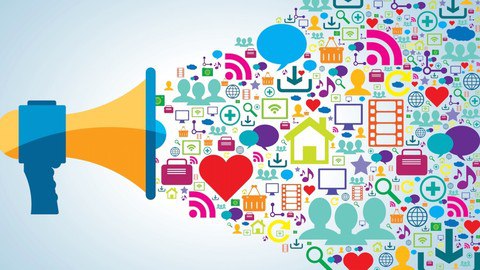Top University Professor
What you’ll learn
-
Services Marketing : Integrating People, Technology, Strategy
-
Marketing Analytics
-
Integrated Marketing Management
-
Global Marketing Management
-
:Marketing Research and Analysis-II
-
Soft Skills For Business Negotiations And Marketing Strategies
-
Marketing research and analysis
-
:Services Marketing: A Practical Approach
-
:Marketing Management – II
-
Services Marketing
-
Strategic Marketing – Contemporary Issues
Welcome to this course on Services Marketing, I am the Zillur Rahman, professor in the
Department of Management Studies at IIT, Roorkee. Across this course, we will give a
special emphasis on Integrating People, Technology and Strategy. Let me explain you why
this is important? As you know that competition is changing every day it is becoming more
intense and your competitors are coming with newer technologies.
Now, companies they have to skill their employees in this new technologies. The employees
have to unlearn the older skills and learn new skills. Companies at the same time have to
educate the customers in using those technology and to educate and make them aware of how
these new technologies are going to benefit them.
Now, with all these changes, changes happening in the environment, companies also have to
then, take these changes into consideration and incorporate them in their strategy. So, that
they remain relevant to the customers as well as employees. So, this is the uniqueness of this
course that also this course we will be talking about how to go about integrating technologies
people and a strategy.
This course is divided into five sections and it has 40 modules. These are those 40 modules
the five sections are. In the first section that is ended understanding service products,
consumers and market is spread across 8 modules. The second section that is on applying the
4 Ps of marketing to services, it spread from module 9 to 19. The third section is on managing
the customer interface that will that will cover module 20 to 29.
The fourth module has will, will be talking about developing customer relationship that
spreads from the module 30 to 35 and in the last we will be talking about, in the fifth section
is striving for service excellence, this covers module 36 to 40. Now, let us start with the first
section that is understanding service products, consumers and market. In the first three
module, that is Module 1, 2 and through 3, we will be talking about new perspective on
marketing in the service economy.
Let us start with module 1. So, we are not talking on New Perspectives on Marketing in the
service economy. So, we will be talking about understanding how services contribute to a
country’s economy and the principal industries in the service sector. We will then identify the
powerful forces that are transforming service markets.
This is the overview of this course, we will talk about why should why we should study
services marketing? And then we will talk about the various definitions of services, we will
then move on to the service sector, what are the industries in the service sector?
The categories of service by the types of processing then we will move on to the key trends
and then, we will also talk about services for what are the distinct challenges that services for
opposes for marketing? And then we will talk about the functions and the service profit chain
and how we should put services strategy into action? So, this is this is what we are we will be
talking about through these modules.
Now, why we should study services? So, the first important point is that services dominate
the global economy. There is an increasing size of service sector across the globe, across the
globe across all the countries the size of service sector is increasing and the relative share of
employment between agriculture and industry and services is changing dramatically.
The, this proportion of employment that comes from agriculture or manufacturing or services
it is changing and even in emerging economies, the service output is growing rapidly and
often represents at least half of the gross domestic product. So, it is about 50 percent of the
GDP that comes from services and the rest 50 percent comes from agriculture and industry.
So, that is why it is important that we should study services.
Now look at this, this slide it shows the evolution of service dominated economy. On the x
axis we have time and per capita income. So, it moves from left to right and from lower to
higher and then on the y axis we have share of employment again it moves from, bottom to
the top as we go up. So, now you see that, these services, the contribution of services in the
GDP and per capita income has increased tremendously.
This slide shows the contribution of service industries to the GDP globally. So globally,
services account for 63 percent of the global GDP, 31 percent comes from manufacturing,
and 6 percent comes from agriculture. So, it is more than 50 percent of the GDP across of the
globe that services contribute to.
This slide shows the size of service sector in various economies. So, you see that on the top
we have countries like Bermuda and Hong Kong and Bahamas and at the bottom, we have
countries like Indonesia, Laos, and Saudi Arabia.
So, this shows the service as percentage of GDP. So in Bermuda is 94 percent of the GDP
while in Saudi Arabia it is 36 percent of the GDP and there are lots of, in India the World
Factbook, 2015 shows that it is 57 percent and now it has increased to more than 60 percent.(Refer Slide Time: 06:13)
The second important point that makes studying of services in important is that most new
jobs are generated by services. So, it is not only about the contribution of services in the
GDP, but also the more amount of job that it generates. So, in most countries around the
world, new job creation comes mainly from services. There are knowledge based industries
such as professional and business services, education and health care. They generate high
paid jobs. In fact, this shift in employment to the service sector has been seen as one of the
longest and the most stable of the economic trends.
Many manufacturing firm too have moved from just bundling supplementary services with
their physical products to marketing certain elements as standalone services. For example,
IBM that was primarily known as a manufacturer has now transformed into a service provider
and has become the world’s largest business and technology service provider offering
management consulting, systems integration and application management services as part of
IBM Global Services. So, you see that the manufacturing pure manufacturing firms they are
moving towards services as and several of them including IBM have now become a pure
service company.
Now, this slide shows the share of service sector in GDP and employment. So, in India, it is
the gross value added by services is 53.2 percent and the employment it generates is 28.6
percent, while in U.S they are about the same. The gross value added is 79.3 percent while
the employment is 80 percent.
(Refer Slide Time: 08:03)
The third important point for us to study services marketing is that understanding of services
will offer personal competitive advantage. So, the distinct characteristics of services and how
they affect both customer behavior and marketing strategy will give important insights and
perhaps create a competitive advantage for us as not only a customer but also as an employee.
This is the distribution of principal industries of the service sector. So, agriculture, so, this is
agriculture, forestry, fishing and mining that contributes to 77, 7.7 percent then there are
government services that contributes to the highest and that is 30, 13.2 percent.
(Refer Slide Time: 08:56)
Now, let us look at some of the powerful forces that are transforming services markets,
government policies, business trends, advances in IT etcetera, are among the powerful forces
transforming today’s service markets. Collectively these forces they reshape demand, supply,
competitive landscape and even the way customer buy and use services.
Of these forces the dramatic development of IT and communications is perhaps the most
important at the moment. So these powerful forces, they are transforming service markets and
the service markets are no longer what they used to be. Because they are reshaping the
demand and supply and the competition and therefore, they have all they have also brought
about a change in how we as customers buy and use services.
Then innovation in big data, the user generated content, mobile communications and network
technology, Artificial Intelligence and app based self service technologies bring their own
service revolution. These technologies they enable firms to deepen the relationship with their
customers, offer multiple ways information flow, and more personalized services. They
improve analytics and improve productivity and therefore improves profitability.
[maxbutton id=”1″ url=”https://click.linksynergy.com/deeplink?id=RMSaaftCK5g&mid=39197&murl=https%3A%2F%2Fwww.udemy.com%2Fcourse%2Fmarketing-in-2020-top-class-course-81-hours-hd-video%2F%3FcouponCode%3DDCE38544388E3D282F54″ ]






















![[100% Free]Python Bootcamp 2020 Build 15 working Applications and Games (31.5 Hours)](https://oyoads.in/wp-content/uploads/2020/05/Python-Bootcamp-2020-Build-15-working-Applications-and-Games-1-100x70.jpg)

![[100% Free]Java Programming: Complete Beginner to Advanced](https://oyoads.in/wp-content/uploads/2020/05/IMG_20200519_054150_522-100x70.jpg)
